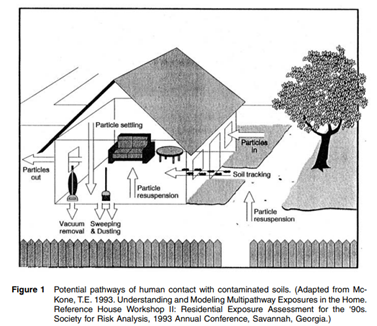The residential environment should be thought of in very dynamic terms. VOCs that enter the residential environment can be absorbed to surfaces, or “sinks,” and then later be released as airborne levels that are depleted by various mechanisms, including air exchange with other rooms of the house and with outdoor air and with chemical/physical transformations in residential air. There is evidence that particulate contaminants, whether generated inside the residence or tracked in/infiltrated from the outdoor environment, are resuspended and recycled within the house by walking on floors and rugs, sweeping and dusting, and vacuuming (see Figure 1). Thus, the residence is the exposure unit.
